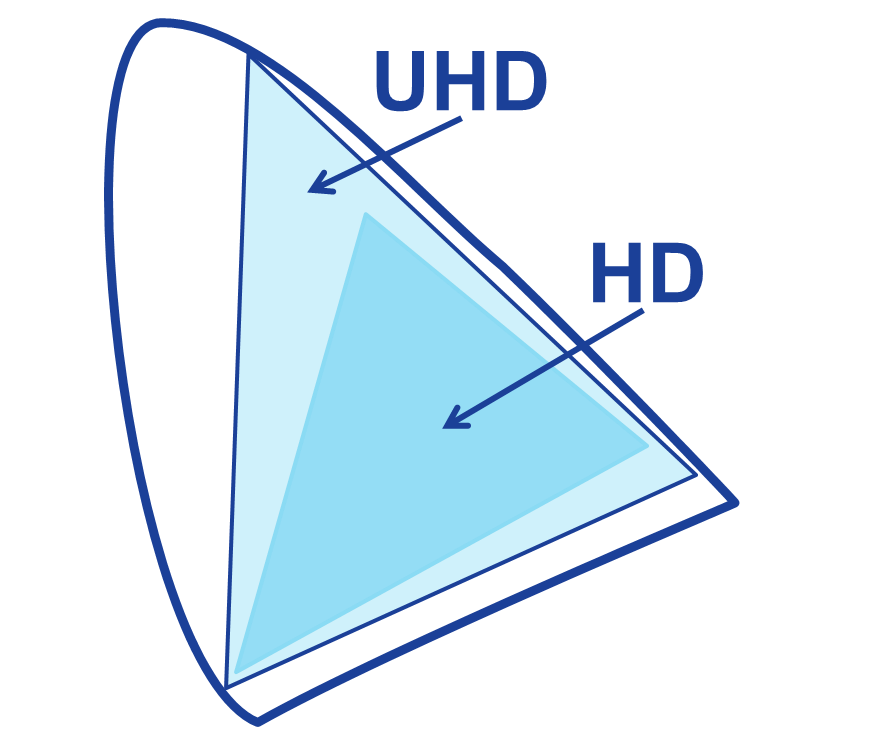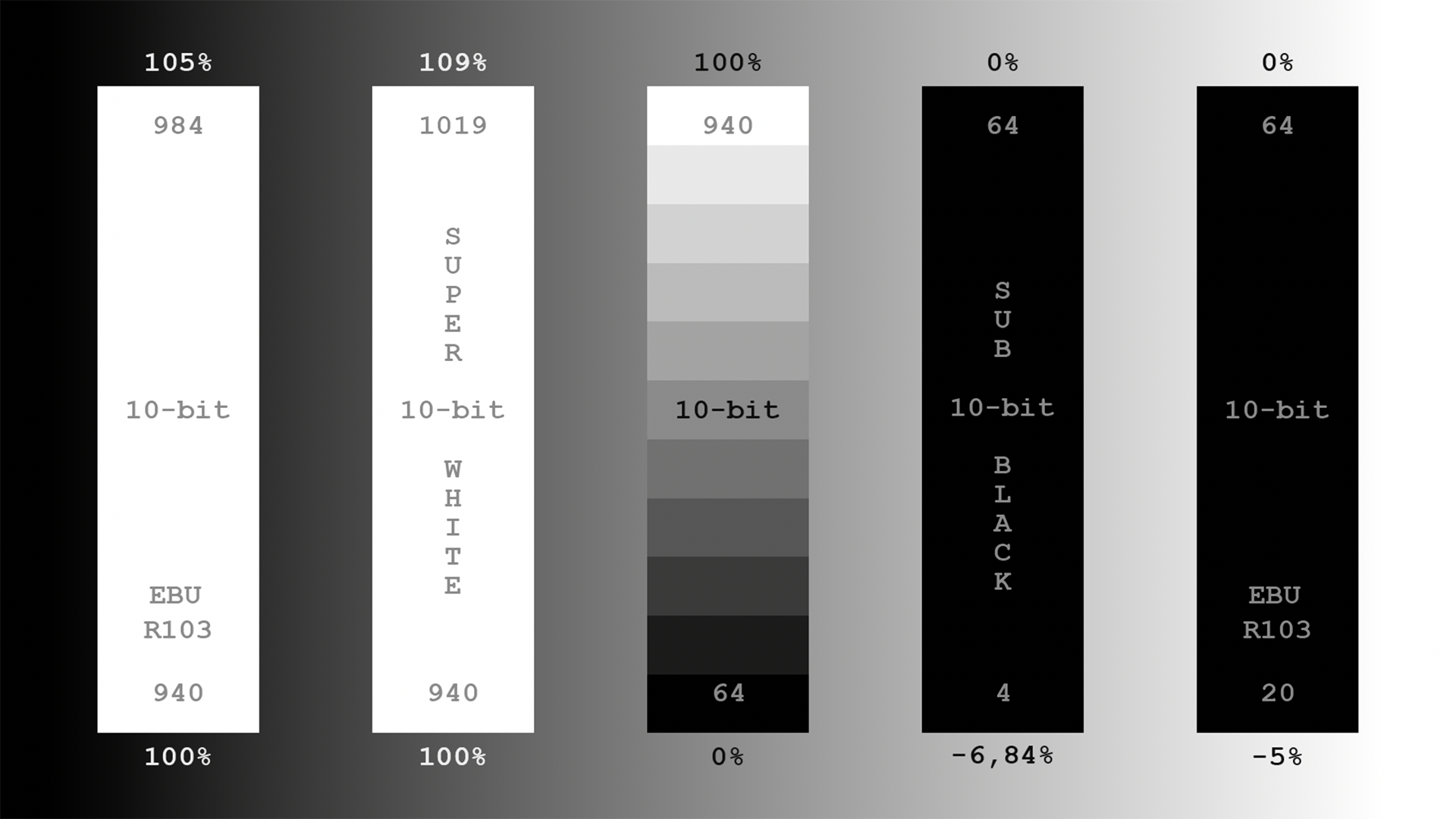UHDTV is short for Ultra High Definition Television and the natural evolution from High Definition Television (HDTV) to a higher fidelity television standard.

Television has always aimed to give the viewer the sense of being part of the scene. The UHDTV format promises a more immersive audiovisual experience than HDTV can offer. It aims to improve the sense of being there and the sense of realness of the content being captured and shown.
We use UHDTV to include: Better resolution (4K), High Dynamic Range (HDR), Wide Colour Gamut (WCG), High Frame Rates (HFR), and Next Generation Audio (NGA).
Also see our UHDTV Glossary.
How the EBU helps
The EBU provides technical specifications and guidelines, performs tests and shares practical experience to help its Members plan and deploy UHDTV services. This work is part of the EBU Strategic Programme on Smart Media Production, which includes groups covering the Audio and the Video aspects, also check out the HDR Implementation Task Force.
The more immersive experience is achieved by improving several video and audio parameters. Not all of these need to be used at the same time; they are options that can be mixed and matched, allowing for image and sound quality improvements to be deployed gradually (e.g. when upgrading existing production facilities). Example: using 1080p/50 with HDR is also a UHDTV service.
| More pixels The first parameter that can be improved over HDTV is the image resolution, often referred to as Ultra High Definition (UHD). Higher resolution allows for a wider field of view. There are two options here: - 3840x2160p = four times HDTV, commonly refered as 4K; - 7680x4320p = 16 times HDTV resolution, commly referred as 8K. |
||
|
More light levels The second parameter concers the video's dynamic range, which is the range of perceptible light levels between the deepest darks and the brightest highlights in a scene. High Dynamic Range (HDR) provides more 'light levels' than Standard Dynamic Range (SDR), allowing images to 'sparkle'. This fits well with newer CE display technologies that feature a higher peak brightness. More on HDR. |
||
 |
More colours The third parameter, which typically goes hand-in-hand with HDR, concerns a wider colour gamut. The colour gamut is defined by three primaries (one for red, green and blue), which define a triangle of all the reproducable colours. The colours in this triangle form a subset of all human perceptible colours. Using Wide Colour Gamut (WCG, ITU-R BT.2020) allows more (saturated) colours to be used than are possible with the colour gamut used for HDTV (ITU-R BT.709). |
|
| More frames (per second) The fourth video parameter that can be 'upgraded' is the frame rate; the number of pictures per second. Extending the frame rate beyond the current 25 or 50 frames per second improves images with motion, which is especially relevant for sports content. With High Frame Rate (HFR) video, motion can look sharper without leading to excessive 'strobing'. |
||
 |
Immersive and personalized audio Personalised Sound Experiences (PSE) - also called: Next Generation Audio (NGA) - brings immersion and personalization. It includes different audio elements (channel-based, scene-based and object-based), gives the user more control (e.g. to change the commentary volume or language), provides more efficient codecs, and is flexible; PSE can serve a multitude of devices and speakers configurations, all using one production master signal. More on PSE. |
Which improvement to prioritise?
The technical options listed above vary in terms of their impact on required production resources, distribution bandwidth and end-user perception. Also, for several developments there is not yet enough mature equipment available, let alone affordable devices. And of course the situation differs country-by-country: audience uptake of new CE equipment, financial situation of the broadcaster, most recent investment cycle, status of other players sharing the same distribution platform, etc.
In brief the current (Q1 2024) UHDTV situation may be sketched as follows:
- 4K resolution is a natural evolution, strongly dependent on equipment replacement cycles. The production equipment is available. Cost arguments (especially those related to I/O and bandwidth) are a key reason why many broadcasters and event producers have opted for 1080p/50 over 2160p/50 for now.
- 1080p/50 + HDR production and signals are increasingly being provided (this was already announced several years ago, e.g. see EBU PTS 2019 - UHDTV panel). Note that 1080p/50 distribution can still benefit from 2150p/50 cameras or production (resolution oversampling).
- In general 8K resolution is not on the radar of European broadcasters, it has mostly been used to market/sell new CE displays.
- HDR with WCG may offer the "best bang for the buck", but attention must be paid to using correct combined SDR + HDR workflows (see more on HDR).
- For distribution both HLG and HDR10 are commonly being mentioned by EBU Members; the appetite for dynamic HDR metadata seems to be low (see EBU BPN 120 and EBU BPN 128).
- HFR is at least several years away, due to a lack of (professional and consumer) equipment and doubts about the 'sweet spot' (see EBU Tech Report 050).
- PSE is dependent on the soundbar penetration in homes, broadcasters changing their workflows and televisions offering user interfaces to allow users to access the NGA features (more on PSE).

This supplement to EBU Tech 3376 specifies profile settings for Sony cameras.

This supplement to EBU Tech 3376 specifies profile settings for Grass Valley cameras.

This supplement to EBU Tech Report 078 provides specific test results concerning the Technicolor Advanced HDR converter.

This supplement to EBU Tech Report 078 provides specific test results concerning the Lynx Technik HDR converter.

This supplement to EBU Tech Report 078 provides specific test results concerning the b<>com / EVS Neuron HDR converter.

It is commonplace to see mobile phones used to shoot video whilst held in a portrait configuration (long axis vertical), which results in aspect ratios such as 9:16, rather than the conventional 16:9. Nevertheless, the importance of user-generated content to broadcasters has created the need to handle and archive images with non-traditional aspect ratios.

Next Generation Audio (NGA) offers significant benefits to audiences, content creators and broadcasters: immersive audio, personalization for listening preferences, and long-term efficiencies in production and distribution. This report is a collaborative product of the Forum for Advanced Media in Europe (FAME).

For broadcasters, the current challenge is to “pick and mix” from the following list of technical options: UHD, NGA, HDR, WCG and HFR. The EBU Strategic Programme on Production is promoting Best Practices to clear the path for new services.

The 64-bit audio file format meets the requirements for NGA and multichannel sound in broadcasting and audio archiving. As with the 16-bit BWF it is based on the Microsoft RIFF/WAVE format.

EBU R 118 recommends that (U)HD cameras be graded or tiered according to their technical specifications and measured quality (see EBU Tech 3335).








































































































































































